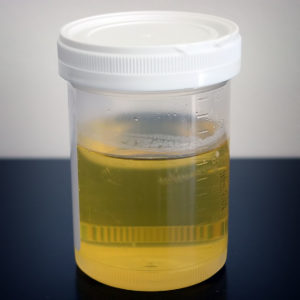| CHEMICAL | DETAILS | FOUND IN PRODUCTS LIKE |
|---|---|---|
| FLAME RETARDANTS | Can affect neurodevelopment and hormone levels, and may increase risk of cancer | Nail polish, foam cushioning in furniture, rigid foam insulation |
| PARABENS | Can mimic natural hormones like estrogen | Cosmetics, personal care products like shampoos, hair gels, lotions |
| BISPHENOLS | Can mimic natural hormones like estrogen | Protective lining for canned goods, hard plastic water bottles, thermal paper register receipts |
| ANTIMICROBIALS | Can interfere with thyroid and other hormones | Colgate Total toothpaste, soap, deodorant |
| BENZOPHENONES | Can mimic natural hormones like estrogen | Sunscreen, lotions, lip balm |
| 1,4-DICHLOROBENZENE | Can affect thyroid hormones and may increase risk of cancer | Mothballs, toilet deodorizers |
| PHTHALATES | Can disrupt male reproductive development and fertility | Vinyl shower curtains, fast food, nail polish, perfume/cologne |
| FRAGRANCE CHEMICALS | Can exacerbate asthma symptoms and disrupt natural hormones | Perfume/cologne, cleaning products, dryer sheets, air fresheners |
| PER- AND POLYFLUOROALKYL SUBSTANCES (PFAS) | Can affect hormones, immune response in children, and may increase risk of cancer | Scotchgard and other stain-resistant treatments, fast-food wrappers |
Surprised? So was I when I had my urine tested for these chemicals. (A urine or blood test is needed to confirm whether you have been exposed.) Let me stress that mine should have been clean. Almost a decade ago, I was shaken by my reporting on a class of toxic chemicals called endocrine disruptors. They are linked to cancer and obesity and also seemed to feminize males, so that male alligators developed stunted genitalia and male smallmouth bass produced eggs.
In humans, endocrine disruptors were linked to two-headed sperm and declining sperm counts. They also were blamed for an increase in undescended testicles and in a birth defect called hypospadias, in which the urethra exits the side or base of the penis rather than the tip.
So I’ve tried for years now to limit my exposure to endocrine-disrupting chemicals. Following the advice of the President’s Cancer Panel, I eat organic to reduce exposure to endocrine disruptors in pesticides. I try to store leftover meals in glass containers, not plastic. I avoid handling A.T.M. and gas station receipts. I try to avoid flame-retardant furniture.
Silent Spring Institute near Boston, which studies chemical safety, offers a “Detox Me Action Kit” to help consumers determine what harmful substances are in their bodies. Following instructions, I froze two urine samples (warning my wife and kids that day to be careful what food they grabbed from the freezer) and Fed-Exed them off for analysis. By the way, the testing is for women, too. Men may wince as they read about miniaturized alligator penises, but endocrine disruptors have also been linked to breast cancer and gynecological cancers. The American College of Obstetricians and Gynecologists warns women that endocrine disruptors can also cause miscarriages, fetal defects and much more.
Finally, I heard back from Silent Spring Institute. I figured this was a report card I had aced. I avoid all that harmful stuff. In my columns, I had advised readers how to avoid it. Sure enough, I had a low level of BPA, best known because plastic bottles now often boast “BPA Free.”

 Today I am posting the story of one person writing about how hard it is to reduce contaminants, that is, unwanted chemicals, in our bodies. The story is by Nicholas Kristof, who has been eating organic foods and trying his best to avoid endocrine (hormone) disrupting chemicals (such as BPA) for a number of years. But the analysis of his urine showed that he wasn't able to totally avoid them.
Today I am posting the story of one person writing about how hard it is to reduce contaminants, that is, unwanted chemicals, in our bodies. The story is by Nicholas Kristof, who has been eating organic foods and trying his best to avoid endocrine (hormone) disrupting chemicals (such as BPA) for a number of years. But the analysis of his urine showed that he wasn't able to totally avoid them.